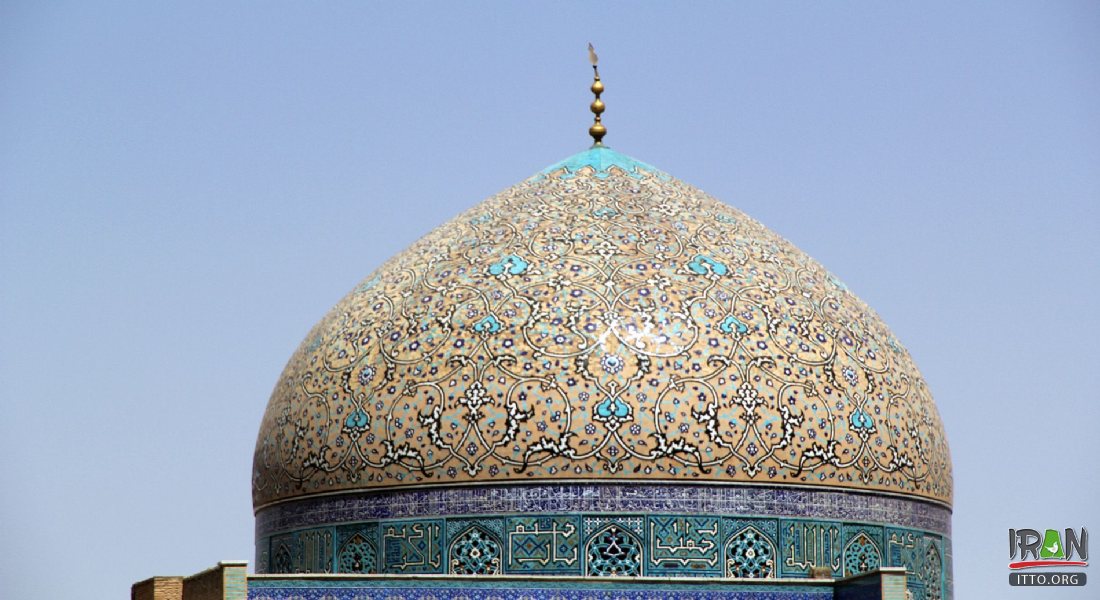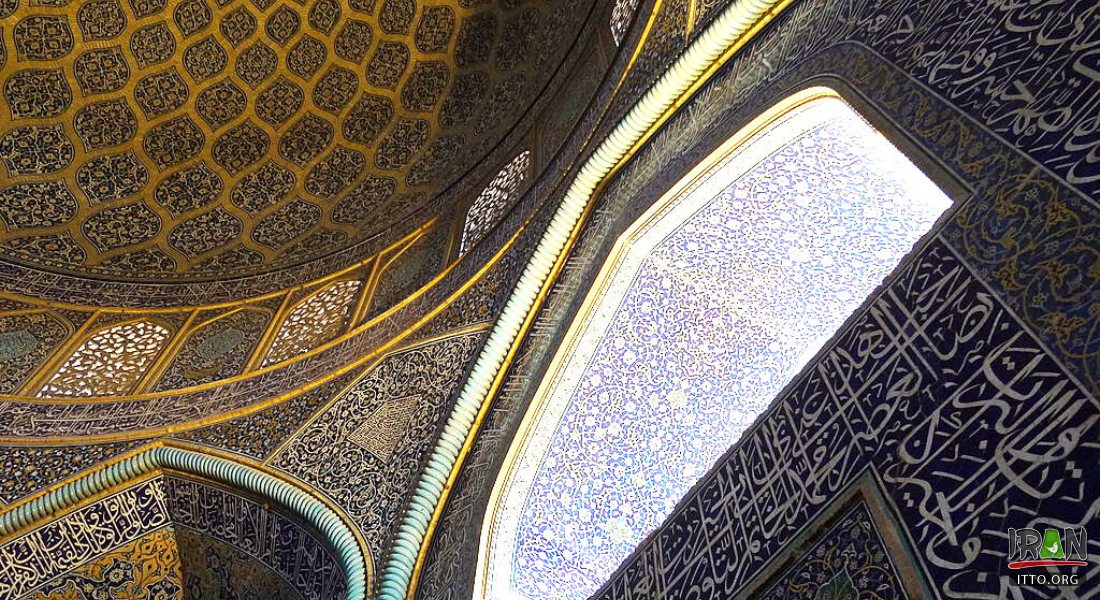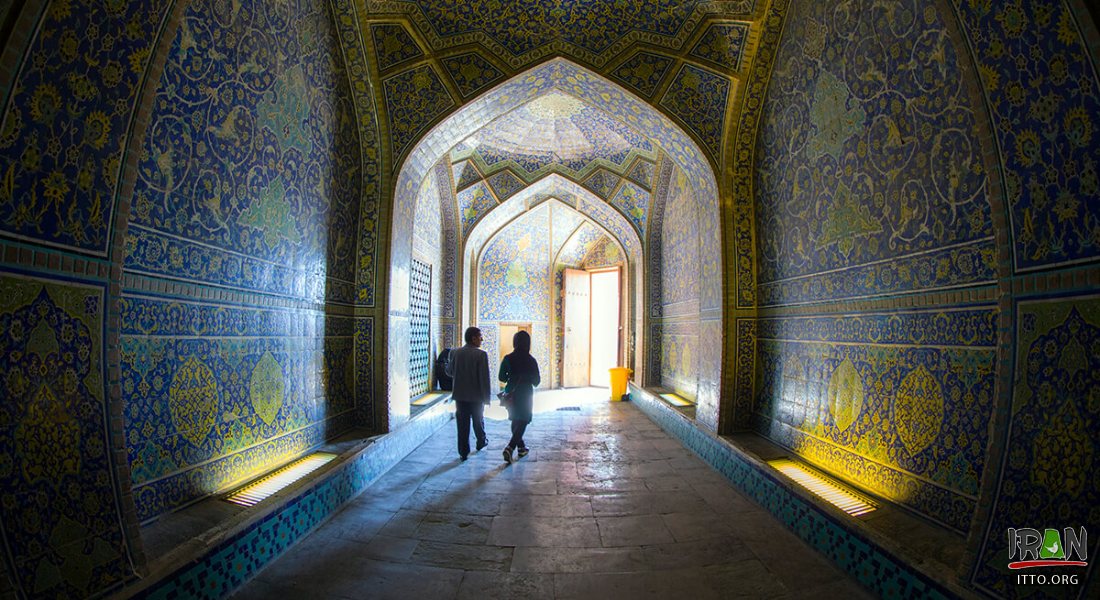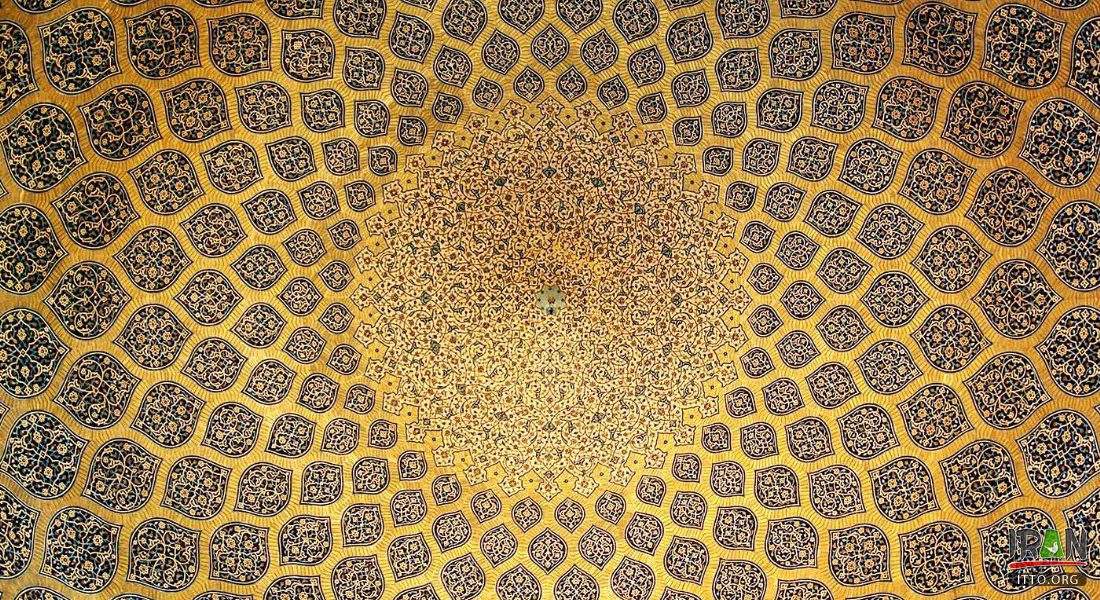Sheikh Lotfollah Mosque is situated on the eastern side of Naghsh-e Jahan square and the northern side opens into the Isfahan Grand Bazaar. This mosque was built during Shah Abbas time, and dedicated to his father-in-law, Sheikh Lotfollah, a prominent religious scholar and teacher who came to Isfahan at the orders of Shah 'Abbas, and resided on the site, but was never involved in the mosque's construction.
Sheikh Lotfallah was born in Mess, which is currently in the Lebanon. Like his family he was a member of the Imami, or Shi'ite sect and was encouraged to take up residence in Iran under the Safavid rulers as part of the policy of promoting Shi'ism in Iran, along with other followers of this tradition from Bahrain.
At first he lived in Mashed, where the second holiest of Shi'ite shrines is located, that of Imam Reza, but, partly due to the political instability of the area at the time and partly because of pressure from Shah Abbas, he took refuge first in Qazvin and then in Isfahan, where he seems to have acquired a son-in-law and patron at the same time. It was probably he who introduced the great mathematician, Sheikh Baha Al-Din Mohammed Ameli, otherwise known as Sheikh Bahai, who designed the famous sundial in the Royal Mosque, to Shah Abbas. Sheikh Lotfallah died in 1622.

One of the architectural masterpieces of Iranian architecture that was built during the Safavid Empire
This beautifully proportioned and decorated mosque, with some of the best mosaics from that era, took nearly 20 years to complete. The pale tiles of the dome change color, from cream through to pink, depending on the light conditions and the mosque is unusual because it has no minaret or courtyard. The figure painted in the middle of the floor under the dome is a peacock at certain times of the day. The sunlight enhances the peacock's tail. The mosque was once called the Women's Mosque, because there is apparently a tunnel between this mosque and the Ali Qapu palace, allowing women from the old dynasties to attend prayers without being seen in public.
The portal iwan is not aligned with the Naghsh-e-Jahan Square’s elevation, but is preceded by a recessed small court which flows from the Square and is linked, on its north and south sides, to the continuous corridor that envelopes the Square’s mercantile facilities. The main entrance to the mosque is located on the east side of this small court. The structure itself is not aligned perpendicularly to the Square’s eastern wall, but lies at an angle (almost 45 degrees) against the Square’s wall.

Interior detail and Tile works of Sheikh Lotfollah Mosque
As a result, when viewed from the Square, the mosque's main portal iwan and dome do not fall on the same axis, as is always the case in other mosques, but instead the dome appears behind the main portal iwan as if having slid 6.5 meters to the right from its axis. This asymmetrical layout was initially introduced to reconcile the (southwest) direction of Mecca with the placement of the mihrab on the qibla wall, and adds visual complexity to the structure.
Contrary to the Square’s sand-colored brick elevation, the portal iwan is elaborately ornamented in colorful mosaics. It is built as a recessed area on the eastern wall of the court, an elevated platform raised by four steps from the court level.
An inscription band in white on a dark blue background runs horizontally on the three sides of the portal niche, above which begins the iwan's vault, comprising four clusters of muqarnases made of small glazed-tiles units. These four clusters ascend to inscribe a concentric floral medallion.
The pointed-arch doorway is located below the inscription band and is flanked by two panels of mosaics of floral arabesques with motifs in yellow, white, and blue on a dark blue background. These panels rest on top of a continuous marble dado.
The offset entry does not allow the visitor to enter the prayer chamber directly from the Square by passing through the main portal iwan, which is aligned on the east-west axis.

Construction of the mosque started in 1603 and was finished in 1619. It was built by the chief architect Shaykh Bahai, during the reign of Shah Abbas I of Persia.
Due to the mosque's alignment on the northeast-southwest axis, upon entering the mosque one walks along two corridors, oriented respectively to the northeast and southeast, which are placed adjacent to the northwest and northeast walls of the prayer chamber.
Turning southwest to face the qibla wall, one enters the domed chamber to see the mihrab on the opposite wall. This journey into gradual deepening into darkness and reemergence into a room bathed with light reflected on the glazed revetment is one of the most rewarding experiences of the building.
In contrast to the grand size of the Square’s space, the Sheikh Lotfollah mosque is very small and is comprised of a single domed chamber (19 meters on a side), surrounded by rooms (which possibly functioned as service areas) on its sides, and preceded by a portal iwan overlooking the Square.
The two rooms accessed from the corridor which envelopes the sanctuary dome measure 6 by 9 meters; one is found on the western side of the corridor, and the other along the far end of the eastern wall.
A third room (8 by 16 meters) is located on the exterior of the southern wall of the sanctuary, and is accessed via the corridor running along the Square wall and then turning right after the vestibule area. Although the Sheikh Lotfollah is not one rectangular structure, its masses can be measured as one rectangular area of 44 by 30 meters and an additional rectangular service area comprising approximately 152 square meters.
The dome is one of the few single-shell domes of the Safavid architecture with a structure consisting of three levels. Four squinches of pointed-arched panels, framed by an inscription band in white and blue demarcated by light blue cable moldings, ascend from the floor and support a sixteen kite-shaped shields that, in turn, support the drum, which comprises sixteen arched panels. The drum is ornamented with alternating double-grilles windows with an arabesque pattern.

The decoration seems to lead the eye upwards toward its center, as the rings of ornamental bands filled with arabesque patterns become smaller and smaller.
The interior dome has a sunburst from which descend medallions inscribing floral motifs, which become larger as they descend away from the center. The exterior of the dome is ornamented with an arabesque of a floral motif in white, blue, and black against a yellow background.
The Sheikh Lotfollah mosque is viewed by historians and visitors as one of the most important architectural projects built on Isfahan's Square, prominent for its location, scale, design, and ornament. It represents the best example of architecture and tile work of Iran in the 17th century. The beauty of its buff dome fills visitors with enchantment. This mosque differs from all others in several respects.






